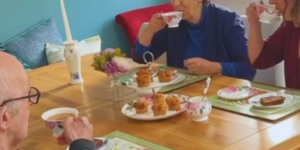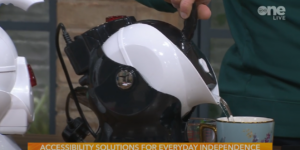In a world that continually pushes the boundaries of technological innovation, it’s astonishing that certain perceptions and stigmas still persist. One such area where this is glaringly evident is in the realm of assistive technology and daily living aids. These remarkable tools have the potential to transform the lives of individuals with limited strength, mobility, dexterity and/or visibility, enabling them to navigate the world more independently and comfortably. Yet, despite their undeniable benefits, a persistent stigma surrounds their usage.
The Hidden Prejudice:
While society had made its strides towards inclusivity and understanding, the stigma attached to assistive technology and daily living aids remains a significant barrier. This stigma is rooted in misconceptions, stereotypes, and a lack of awareness. Often, individuals who need these aids face judgement and unwarranted assumptions that can be both emotionally and psychologically taxing.
Misconception & Stereotypes:
One of the primary contributions to the stigma is the prevalence of misconceptions and stereotypes. Assistive technology is sometimes seen as a symbol of weakness or inadequacy, perpetuating the idea that using these tools implies an inability to function without help. This mindset fails to acknowledge the incredible resilience and determination of those who use such aids to enhance their quality of life.
Invisible Constraints:
Unlike physical barriers, the stigma surrounding assistive technology is an invisible constraint that can be harder to combat. People with limited strength, mobility, dexterity and/or visibility might hesitate to use the necessary tools because of a fear of judgement, leading to a cycle of dependence instead of empowerment.
This stigma not only impacts their access to opportunities, hindering their full participation in society.
Redefining Independence:
It’s crucial to challenge the narrow definition of independence that underlies the stigma. True independence should be about choice and freedom, rather than a refusal to seek assistance.
Assistive technology empowers individuals by providing them with the tools they need to live life on their terms, making daily tasks more manageable and fostering a sense of self-sufficiency.
Shifting Perspectives:
Breaking down the stigma requires a collective effort. Education plays a vital role in shifting perspectives and dispelling misconceptions. Schools, workplaces, and communities must engage in open conversations about assistive technology, highlighting its potential to bridge gaps and foster inclusivity.
Celebrating Diversity & Resilience:
Rather than stigmatising those who assistive technology, society should celebrate their diversity and resilience. Their ability to adapt, overcome challenges, and embrace innovation is a testament to the strength of the human spirit.
By showcasing these stories and acknowledging the positive impact of assistive technology, we can pave the way for a more inclusive and empathetic society.
The lingering stigma around assistive technology and daily living aids is a reflection of deeply ingrained misconceptions and a failure to recognise the true essence of independence. As a society, we have the power to redefine how we perceive these tools and, in doing so, create a more inclusive environment where everyone can thrive. It’s time to breakdown the barriers that exist not in the technology itself, but in the attitudes that surround it, fostering a world where empowerment, choice, and accessibility are valued above all else.
If you or someone you know struggles with the kettle at home, it is too heavy and they struggle to pour, why not check out our Uccello Tipping Kettle – the ideal daily living aid with style and function built in.














Leave a Comment